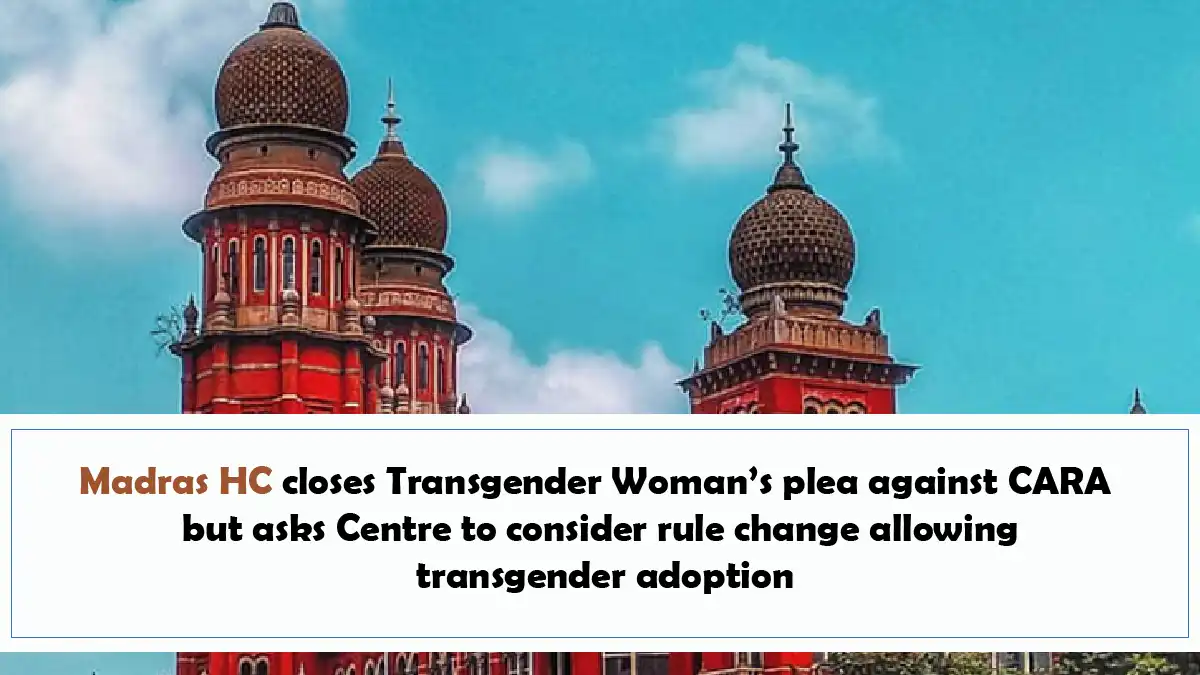

Table of Contents
ToggleThe Supreme Court has passed an order with elaborate guidelines to make the recruitment regarding persons suffering from benchmark disabilities (PwBD) in the District Judiciary fair. High Courts and all State PSCs have been ordered to follow the directive across the country until further orders. The bench, led by Chief Justice of India DY Chandrachud, and comprising Justices JB Pardiwala and Manoj Misra, made a point to note that such directions shall carry prospective application and shall be uniformly applied across different recruitment exercises so as to make the judiciary inclusive.
The matter started from a letter addressed to the Chief Justice of India DY Chandrachud written by the mother of a visually impaired candidate, who was excluded from the recruitment to judicial service. Taking suo motu cognizance, the Supreme Court converted the said letter into a petition under Article 32 of the Constitution of India, noticing the Madhya Pradesh High Court, the State of Madhya Pradesh and the Union of India. Senior Advocate Gaurav Agrawal appeared on behalf of the Amicus Curiae, and he pointed out that separate cut-off criteria must be developed in respect of PwBD candidates in order to extend equal opportunity in the Selection process.
The Supreme Court acknowledged the existing barriers for PwBD candidates in judicial recruitment and issued several key directions:
The Hon’ble Supreme Court noted that:
“The High Courts/ PSCs, while making recruitment to judicial service, ought to provide separate qualifying marks for persons with benchmark disabilities in the Preliminary Examination. The qualifying marks should ordinarily be the same as for SC/ST candidates or can even be lower if so prescribed by the relevant Rules. If the Rules are silent, then the competent authority can lay down such qualifying marks;”
After the Preliminary Examination is held, a separate cut-off should be prescribed for persons with benchmark disability to ensure that candidates equal to 10/15/20 times3 the number of posts reserved for PwBD candidates, are eligible to take the main exam. As done by the High Court of Jharkhand, a separate cut-off can be provided for:
(a) blindness and low vision.
(b) deaf and hard of hearing.
(c) locomotor disability.
(d) Others, i.e. PwBD candidates covered by Section 34 (1) (d) & 34 (1) (e) of the Act.
The High Court and PSC ought to lay down separate qualifying marks for the Mains Examination for PwBD candidates which can be the same as SC/ST candidates or can be even lower if so required by the relevant Rules. If the Rules are silent, then the competent authority can lay down such qualifying marks.
While declaring the results for the Mains Examination, a separate cut-off should be prescribed for PwBD candidates [who have the qualifying marks] who can appear for the interview so that sufficient persons belonging to PwBD category take the interview which is normally 3/5 depending on the relevant Recruitment Rules 3. At this stage also the recruiting agency may be able to follow the bifurcation as provided in Section 34 (1) of the Act.
After the interview at the time of final selection, PwBD candidates who clear the minimum qualifying marks in the Mains Examination and Interview ought to be recruited to the service based on horizontal reservation i.e., persons with PwBD who are on their own merit eligible for General / OBC / SC / ST / EWS seats should be counted towards the total reserved vacancies.
The Hon’ble Supreme Court Clarifies that:
“Reservations for persons with disabilities shall be horizontal in nature and vacancies for persons with benchmark disability shall be maintained as a separate class.”
The Supreme Court has ordered that the guidelines must be circulated to the Registrars General of all High Courts, which should be presented before chief justices and recruitment committees to ensure compliance. The matter is scheduled for review in two weeks, where the Court will assess compliance and further developments in implementing these directives.
– Credits: By Anaida Khan Pursuing 5th year of BALLB (Hons.) from Dharmashashtra National Law University, Jabalpur
IAW resources
Browse our help directory